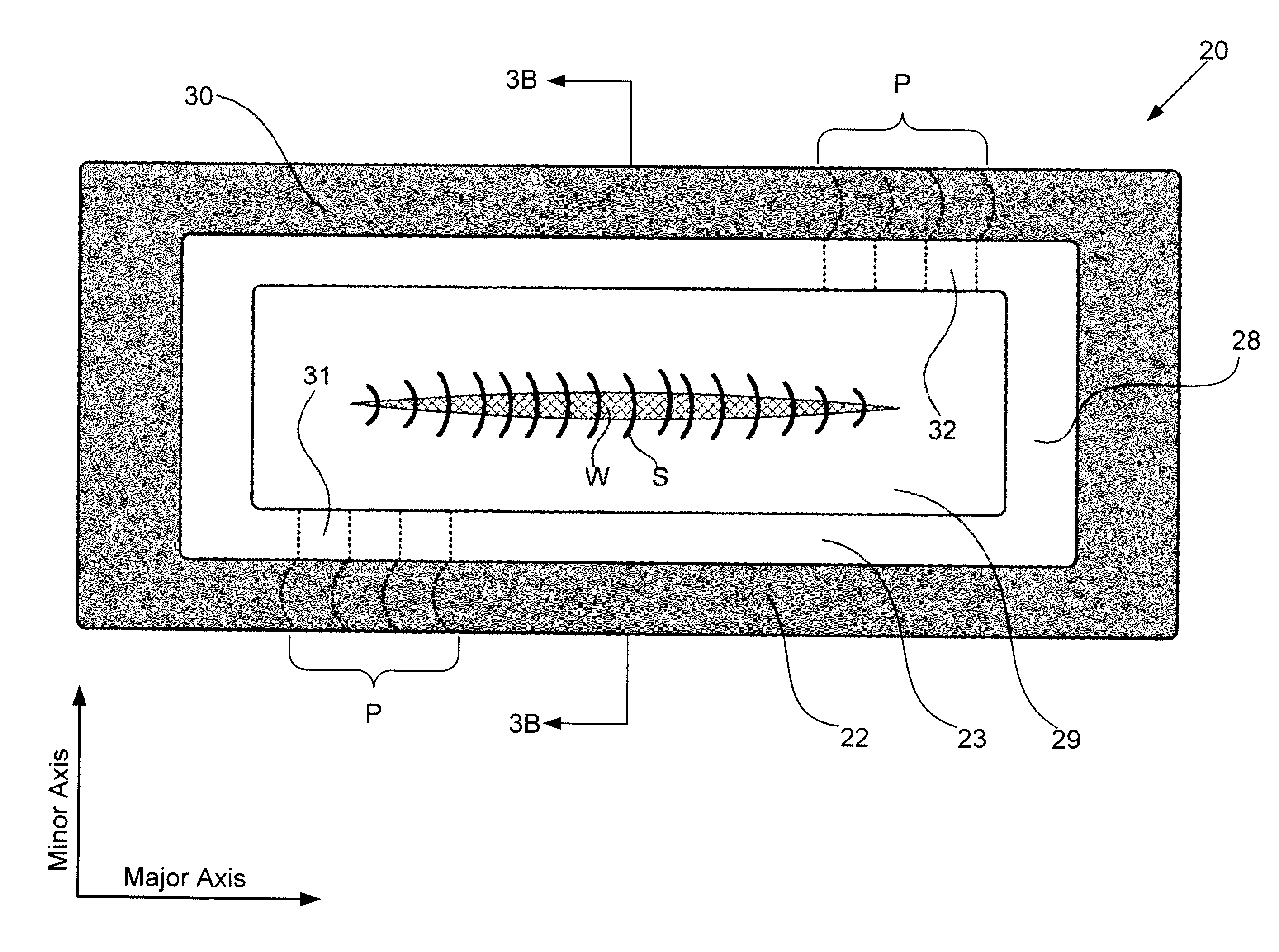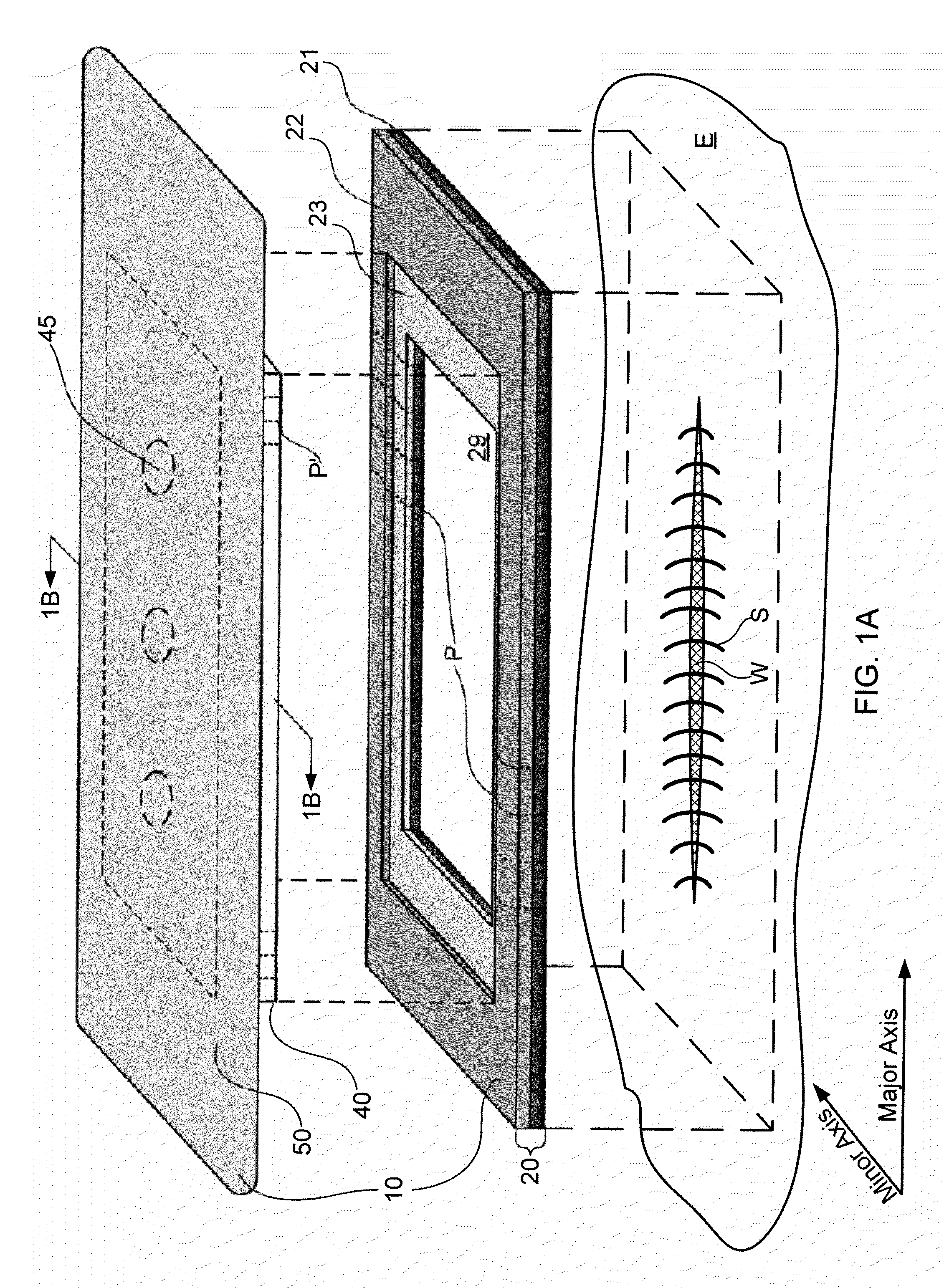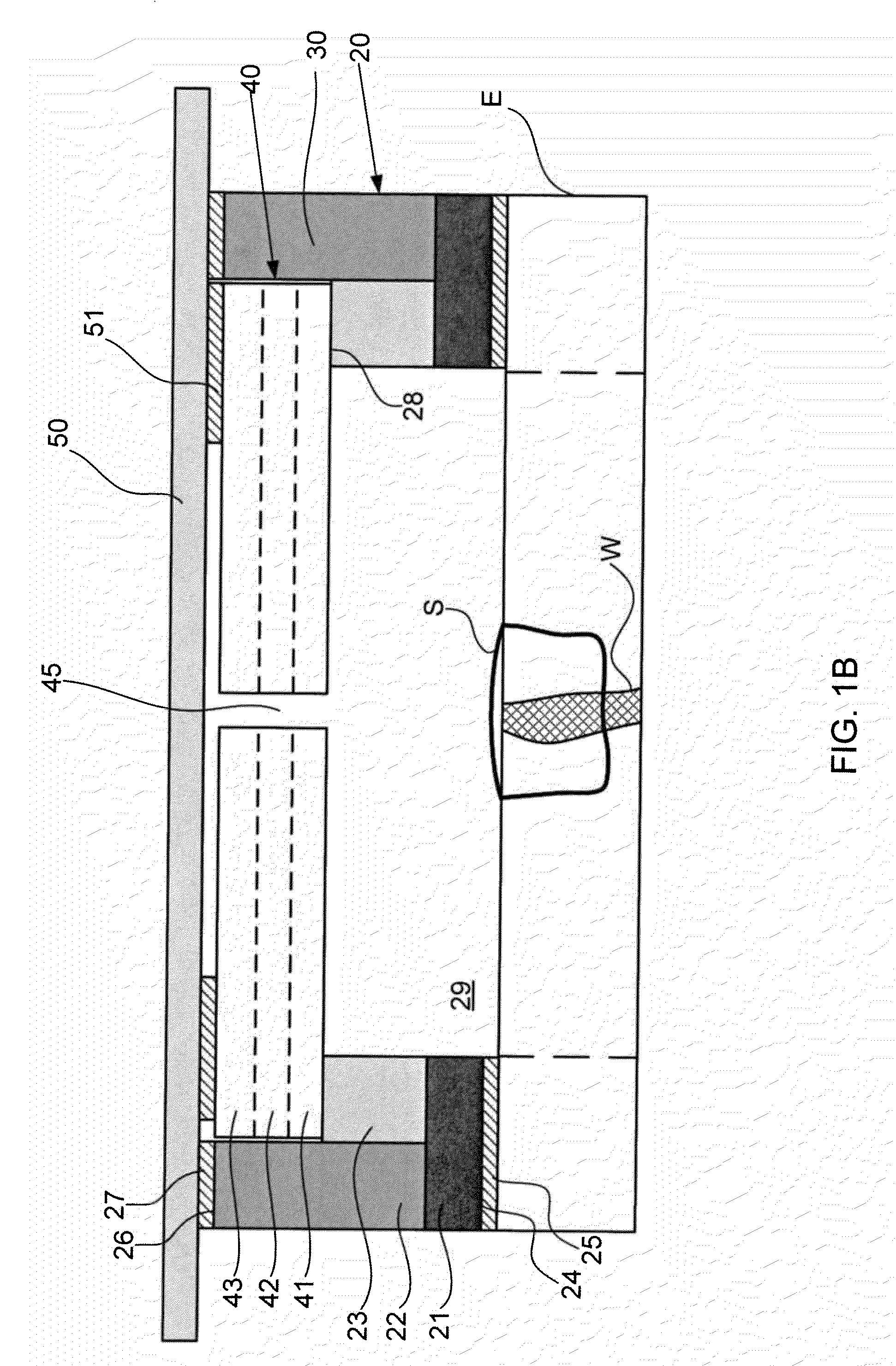Systems and methods for protecting incisions
a wound protection and incision technology, applied in the field of incisions, can solve the problems of delayed healing, high risk of infection, large tissue loss, and relatively high risk of infection in the wound
- Summary
- Abstract
- Description
- Claims
- Application Information
AI Technical Summary
Benefits of technology
Problems solved by technology
Method used
Image
Examples
Embodiment Construction
[0033]The present invention provides systems and methods for protecting wounds, such as incisions. Among other things, the systems and methods provide a wound dressing that cushions the wound and also resists lateral forces, thus reducing the risk of wound dehiscence, particularly for wounds being treated using primary or tertiary intention. The dressing further transfers fluid away from the wound and into a reservoir that is suspended over, and not in continuous contact with, the wound. This arrangement promotes wound healing by reducing the disruption of the wound bed (and pain) caused by dehiscence and / or by periodic replacement of conventional dressings, such as gauze, which adhere to the wound bed.
[0034]An overview of an exemplary embodiment of a system for wound protection constructed in accordance with the principles of the present invention is first described, as well as a method of applying and using that system. Further details on the individual components employed in the ...
PUM
 Login to View More
Login to View More Abstract
Description
Claims
Application Information
 Login to View More
Login to View More - R&D
- Intellectual Property
- Life Sciences
- Materials
- Tech Scout
- Unparalleled Data Quality
- Higher Quality Content
- 60% Fewer Hallucinations
Browse by: Latest US Patents, China's latest patents, Technical Efficacy Thesaurus, Application Domain, Technology Topic, Popular Technical Reports.
© 2025 PatSnap. All rights reserved.Legal|Privacy policy|Modern Slavery Act Transparency Statement|Sitemap|About US| Contact US: help@patsnap.com



